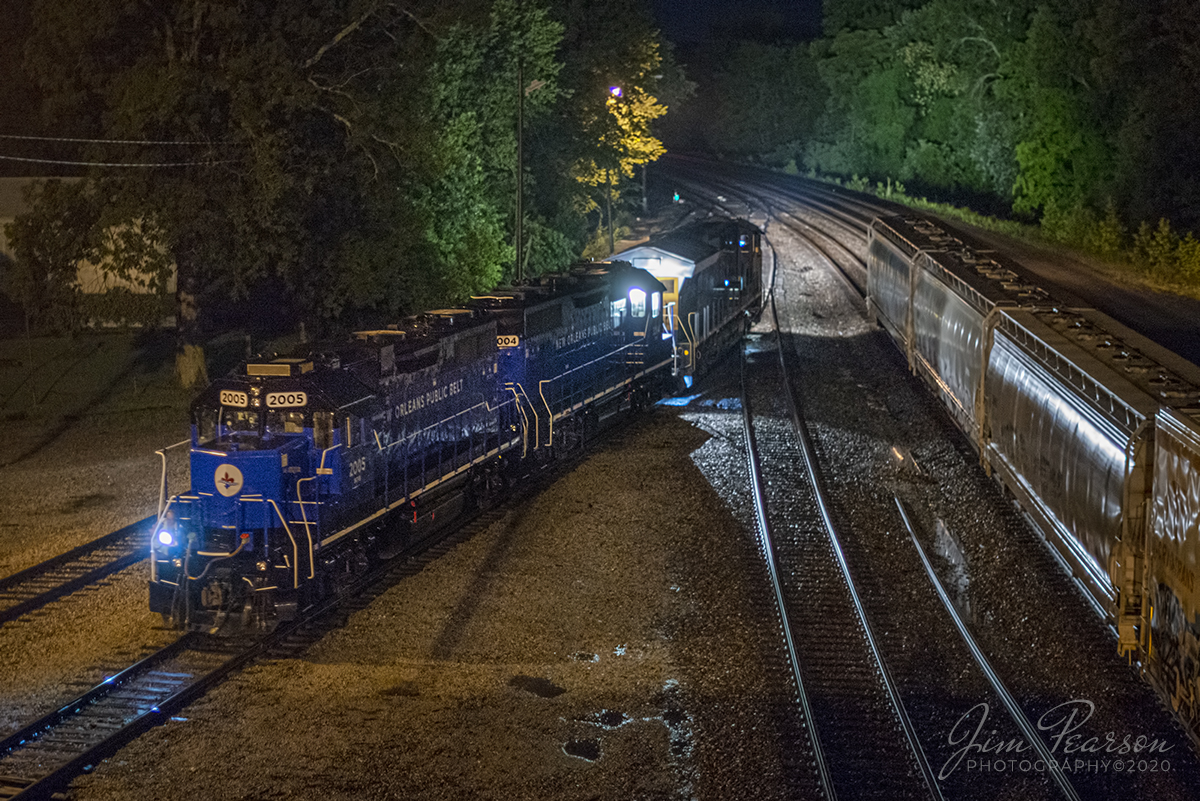August 1, 2020 – The conductor on CSX Q513 shines a light on the track ahead from the nose of New Orleans Public Belt Railroad (NOPD) 2005 as it and 2004 are backed into Howell Yard in Evansville, Indiana to perform a pickup before continuing its trip on south along the Henderson Subdivision on a wet and cool summer night.
According to a press release from – The New Orleans Public Belt Railroad (NOPB), it is in the process of upgrading its locomotive fleet with eight new locomotives to replace aging engines, improve efficiency, and lower overall emissions. Recognizable by their bright blue color, the new locomotives will provide reliable service and support the short-line railroad’s commitment to integrating more sustainable business and operational practices.
The new EPA-classified Tier One locomotives will allow NOPB to reduce its fleet size by 46 percent, from 15 locomotives to eight. Fuel consumption will be reduced by 25 percent, and emission reductions include a 40 percent reduction in nitrous oxide (NOx), which pollutes the ozone layer and creates smog, along with a 50 percent reduction in particulate emissions.
In addition to fuel and emissions savings, the new leasing structure allows NOPB to achieve significant operational and capital savings.
These are two of their new locomotives that are dead-in-tow on Q513 heading south to their new home.
According to Wikipedia: The New Orleans Public Belt Railroad (reporting mark NOPB) is a Class III railroad, and a subsidiary of the Port of New Orleans. It connects with six Class I railroads serving the city, and provides switching and haulage service. It is estimated that one-third of the United States’ east-west rail freight crosses the Mississippi on the Huey P. Long Bridge segment of the railroad.
The impetus for the NOPB came at the start of the 20th century era when multiple railroads terminating locally created both congestion at the Port of New Orleans and safety problems on city streets. The railroad began operation in 1908 with the intention of giving the major railroads “uniform and impartial” access to the port.
Tech Info: Nikon D800, RAW, Nikkor 50mm, f/1.4, 1/30, ISO 3,600.

